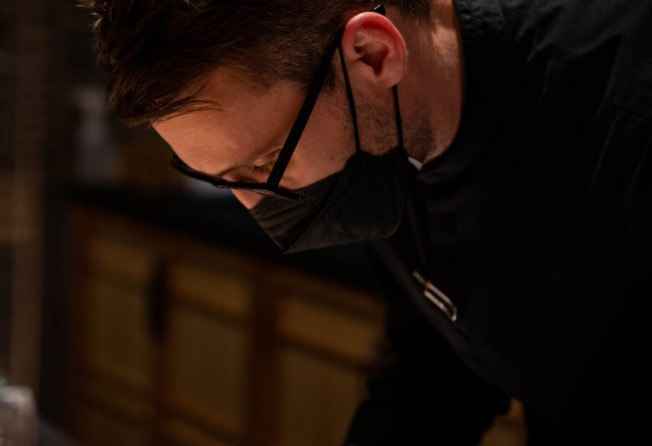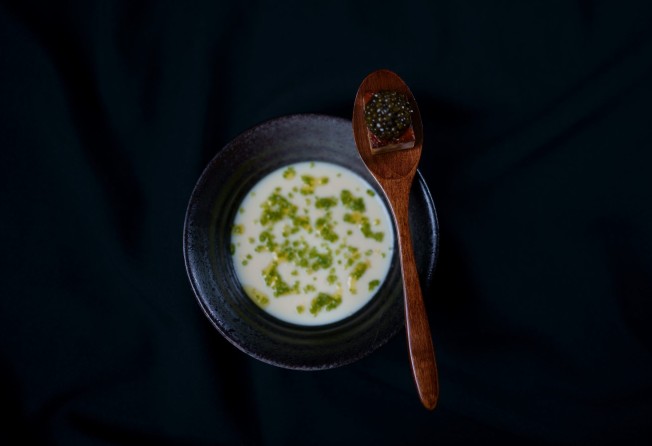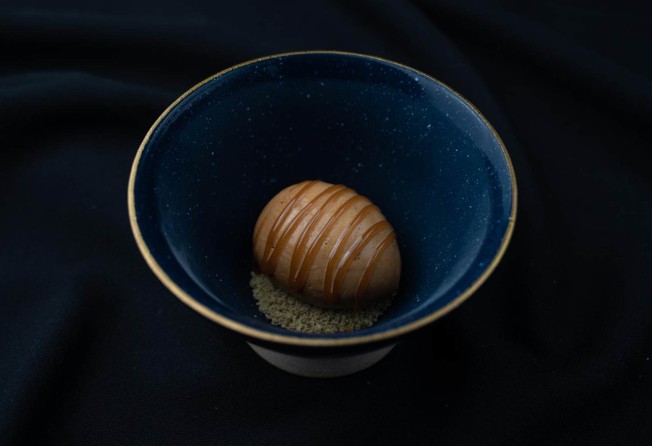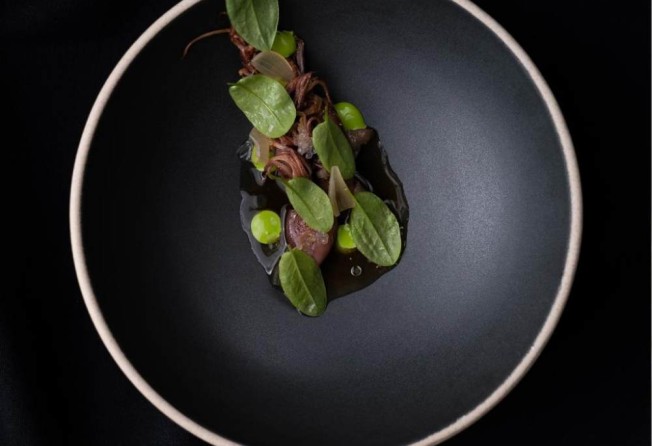
American chef on culture shock in Europe – he foraged for ants and smoked reindeer – and doing his own thing in Hong Kong at Haku
- Midwesterner Rob Drennan, the chef de cuisine of Haku in Hong Kong, tells Bernice Chan about foraging for ingredients in Norway and geotagging blueberries
- His early career included cooking Japanese-American and Filipino cuisines, and at Haku he’s cooking ‘good food inspired by Japan’ and facing down negativity

How did you become interested in food? “When I was a kid, my mom wasn’t that great a cook, she was a very busy single mother for a while. But when we went to restaurants, I was drawn in, like when the Wizard of Oz says, ‘Pay no attention to that man behind the curtain’. You read a piece of paper, it goes into the ether and then out comes your food.”
When did you start to learn to cook? “I was around 14. I was terrible at school. Science and history were my favourite classes, but not maths or English grammar. In my last two years of high school I signed up for a culinary arts programme. My culinary instructor chef was a Swedish guy, Claes Passmark, who had a way of teaching that made you interested in cooking. Afterwards I went to Oklahoma State University, which had a vocational college for culinary arts.”
What were your first jobs out of college? “I really started my career at Metro Wine Bar and Bistro [in Oklahoma]. We did bistro food like burgers, steak frites, pasta, all kinds of salads, flourless chocolate cake, crème brûlée. I was there for almost four years; by the time I was 21 years old I had been promoted to sous chef.”
Where did you work in Austin, Texas? “I worked at Uchiko, where the food was very Americanised Japanese food. It was a learning curve for me to learn the names of the ingredients. I didn’t know what yuba was, or that there were different types of aubergine. I felt so ignorant. At the end of the night we had knife-sharpening competitions to see who could sharpen the best.

“We would come up with special dishes that could go on the menu for a few weeks. On paper, one of my ideas sounded gross but it worked: compressed watermelon with heirloom tomato, yuba, pistachio, shichimi togarashi and dashi made with buttermilk instead of water. It made it onto the specials menu.
“After two years I followed the chef to Qui [also in Austin], a Filipino restaurant. The tasting menu had 20 to 25 dishes so I was very well organised. Our lists had lists and I’m still that way.”
How did you get to Norway? “When I was 25 I applied for a mentorship programme called Ment’or BKB, after Paul Bocuse, Thomas Keller and Daniel Boulud. I wrote essays on why they should give me money to go anywhere and stage [intern]. They had a list of US restaurants like Per Se and French Laundry, but I was looking to get out of the country. My friend [executive chef at Roganic, in Hong Kong] Ollie Marlow was a sous chef at Maaemo in Oslo, Norway, and he helped me get a six-week stage there.”
What was it like going to Europe for the first time? “It was a culture shock. I didn’t really know what I was doing and I was the only American there, trying to understand people’s English. There were langoustines as long as your arm and ingredients I had never seen before.
“We went foraging for things like wood sorrel and ants, which was a lot of fun. We put our hand in the anthill and waited for the ants to crawl up our arms and then brush them off into a box. You’re standing on the anthill so they would crawl in our pants and bite. We froze the ants and removed the excess dirt. The restaurant had no lemon, lime or citrus so ants were the alternative. They were delicious!

“Before I left Maaemo, the head chef [Esben Holmboe Bang] told me he was doing a guest chef dinner in New York a month later and I helped them for three days. That led to me getting a job at Maaemo for two years.”
What was it like the second time? “I flew out to Oslo in February 2016, but when I got there, the immigration officer said my visa wasn’t processed and they put me in an airport jail – a room with a toilet in it. They had me count my money and take my belt and shoes off. I was scared I would have to leave the country. It took a few weeks for the restaurant to sort out the visa.”
Why were you interested in doing R&D? “Maaemo had a test kitchen and I asked Esben if I could be the R&D chef. I drafted a letter explaining what was important to me as an R&D chef and what it could mean for him and the restaurant. For example, you have a folder that says blueberries: where do we source them from, farmers or in the wild? We could geotag locations of where we got them, and list recipes or ideas so that you don’t start from scratch.

“He let me work in the test kitchen researching ingredients, techniques, writing recipes, implementing them in the menu. We also went on field trips to local farms. We even went to Finnmark, in the very far north of Norway, where we got to herd reindeer and learn how to prepare the meat and smoke it.”
How did you get to Hong Kong? “I was in Portland when Covid-19 hit and a friend who I worked with at Maaemo asked if I wanted to work at Haku. I knew nothing about Hong Kong. The only thing I can compare it to is New York. The interesting difference is New York has around a million more people than Hong Kong, but Hong Kong is one 10th the size of New York, according to Google. It’s just so concentrated, but it’s not as dirty as New York, and the subways are a lot nicer and cheaper.”
What has it been like taking over? “I know who [former Haku chef] Agustin Balbi is, but I’ve never met him. It’s a bit frustrating because there were a lot of online comments saying Haku is not as good as when Agustin was there. I’m not trying to cook Agustin’s food better than him, I’m trying to do my own thing. I want people to come to Haku and not feel any pretension, just have good food inspired by Japan that is a little unexpected.”

Do you have any favourite ingredients? “My favourite is sansho pepper from Wakayama prefecture. Not a lot of people like it because it gives that tingly feeling in the mouth. For me, when you smell yuzu you know it’s yuzu; you smell truffle, you know it’s truffle. But sansho pepper is so floral, so magical. At Haku, we use it on the wagyu and in our dark chocolate.”